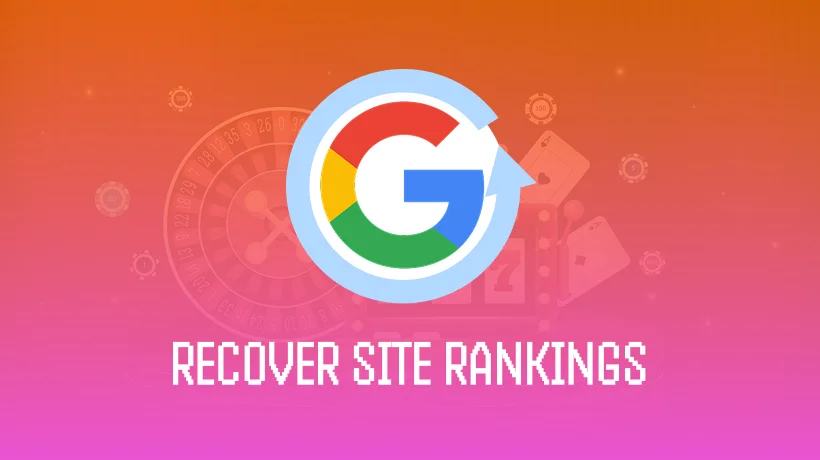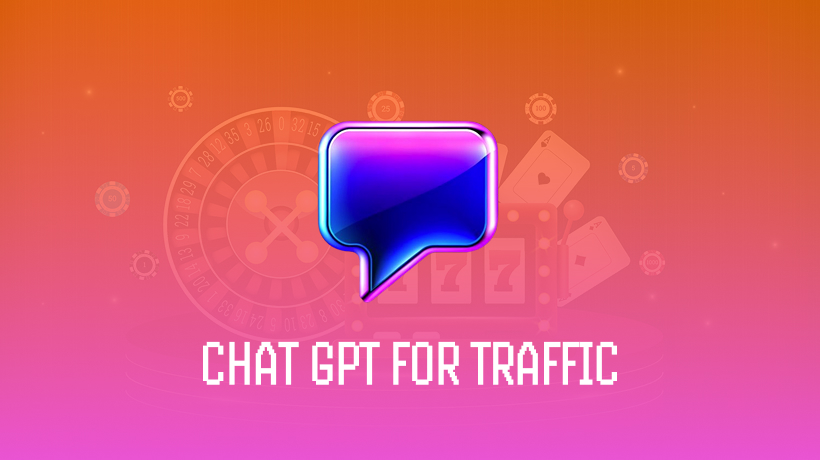The truth is that recovery is possible, but it’s not easy. Data from algorithm recovery specialists shows that only about 18% of affected sites see meaningful improvement after major core updates, but that number also means sites do recover when they take the right approach.
The catch is that quick fixes won’t save you. Deleting a few pages or tweaking some title tags isn’t enough. Recovery requires understanding exactly what hit your site, manual penalty or algorithmic adjustment, then implementing comprehensive fixes that prove to Google you’ve genuinely improved quality.
The good news is that there’s a clear process that works, when sites that commit to thorough quality improvements, demonstrate real expertise, and stay patient through Google’s re-evaluation cycles can not only recover but sometimes exceed their pre-penalty traffic.
What follows is the step-by-step recovery framework, realistic timelines you need to set, and critical mistakes that sabotage most recovery attempts. But first, you need to diagnose what actually hit you because that determines everything else.
First, Figure Out What Actually Hit You
The first step separates successful recoveries from wasted efforts, and that’s knowing whether you’re dealing with a manual penalty or an algorithmic adjustment. This distinction isn’t just technical jargon, it completely changes your recovery strategy and timeline.
Checking for Manual Penalties
Manual penalties are straightforward to identify because Google literally tells you about them. A human reviewer at Google looked at your site, found violations, and slapped you with a penalty.
Here’s where to check:
- Open Google Search Console
- Go to Security & Manual Actions in the left sidebar
- Look under “Manual Actions”
If you have a manual penalty, you’ll see specific violations listed:
- Unnatural links pointing to your site
- Thin content with little value
- User-generated spam
- Cloaking and sneaky redirects
The notification explains exactly what Google found wrong.
A recovery path is to fix the listed violations, then submit a reconsideration request. Google’s webspam team typically reviews these within 10-30 days. Once lifted, improvements can show within 48 hours for brand terms.
Spotting Algorithmic Hits
Algorithmic adjustments arrive silently, with no notification or email. You only discover them when traffic drops and the timing matches Google’s announced updates.
Here’s how to confirm an algorithmic hit:
- Check your Google Search Console traffic data around the drop date
- Compare timing with Google’s algorithm update calendar
- Look for patterns: Did specific page types drop? Certain topics? Mobile vs desktop?
- Check if competitors in your niche also got hit
The recovery path here is comprehensive quality improvements across content, technical SEO, and user experience. The catch is that recovery typically takes 3-6 months minimum, often requiring Google to re-evaluate your site during the next core update.
| Factor | Manual Penalty | Algorithmic Adjustment |
|---|---|---|
| Notification | Yes, in Search Console | No, discovered through analytics |
| Recovery Process | Fix issues + reconsideration request | Comprehensive quality improvements |
| Timeline | 10-30 days for review | 3-6+ months (next core update) |
| Improvement Speed | 48 hours to 2 weeks after approval | Gradual re-evaluation over time |
Why this matters is that if you’re fixing algorithmic issues but waiting for a reconsideration approval that’ll never come, you’re wasting time. If you have a manual penalty but only make content tweaks without requesting review, nothing changes. Get the diagnosis right first.
The Step-by-Step Recovery Process
This is the comprehensive approach that actually works. Not quick fixes or cherry-picked changes, sites that try partial improvements either don’t recover or recover then drop again. You need the full treatment.
Step 1: Collect Your Data
Before changing anything, gather evidence showing what happened.
Start with Google Search Console:
- Export your Performance report covering 3 months before the update to present
- Filter by pages to see which specific URLs lost traffic
- Check the Queries tab to identify dropped keywords
- Segment by device (mobile vs desktop) and country
Then check Google Analytics:
- Compare traffic patterns before and after the update date
- Look at bounce rates and time on page for affected content
- Note any user behaviour changes
You’re looking for patterns, for instance:
- Did blog posts tank while product pages stayed stable?
- Did informational keywords drop, but transactional ones hold?
- Is the problem site-wide or concentrated in specific sections?
Patterns reveal what Google’s algorithms flagged.
Step 2: Analyse What Google Now Favours
Search your top 10-20 dropped keywords in incognito mode, see who’s ranking where you used to be, then this shows what Google now considers quality for those searches.
Compare the current top-rankers to your content across five dimensions:
- Content depth: Are they writing 2,000-word comprehensive guides while you have 500-word summaries?
- Content format: Do they use comparison tables, step-by-step processes, or video embeds you’re missing?
- Expertise signals: Can you see author credentials, expert quotes, or first-hand experience demonstrated?
- User experience: Test their page speed using PageSpeed Insights. Check mobile experience on an actual phone.
- Content freshness: Look for “Last updated” dates. Is their information more current?
Also note new SERP features. Did Google add AI Overviews, People Also Ask boxes, or Featured Snippets? These change how much traffic even top positions get.
Step 3: Fix Content Quality Issues
Now, audit your content honestly. Google’s Helpful Content guidelines provide the evaluation framework:
- Does your content provide original information, research, or analysis?
- Is it comprehensive enough that someone leaves satisfied?
- Would you bookmark this or share it with a friend?
- Does it demonstrate real expertise and experience?
- Was it created for people or primarily for rankings?
For content that can be saved, improve it by applying the following:
- Add depth and originality: Include data, examples, and insights competitors don’t have.
- Show real experience: Add personal photos from actual use. Include specific details only someone with hands-on experience would know.
- Display expertise: Add author bios with credentials. Have qualified experts write or review sensitive topics.
- Update outdated information: Refresh statistics, examples, and screenshots to current versions.
For content that can’t be saved, prune it:
- Thin pages under 300 words with no unique value
- Duplicate or near-duplicate content
- Outdated content that’s irrelevant now
- Pages that exist only to target keywords
Always use 301 redirects when deleting pages to preserve any link value and avoid broken links.
Step 4: Strengthen E-E-A-T Signals
E-E-A-T (Experience, Expertise, Authoritativeness, Trustworthiness) became the dominant factor for evaluating quality, especially for Your Money or Your Life topics like iGaming. Here’s a breakdown:
- Experience: Show you’ve actually done what you’re writing about. Include first-hand photos, detailed testing processes, and specific examples from real use.
- Expertise: Display author credentials prominently. For gambling and betting content, show you understand markets, regulations, and strategy, not just surface-level information.
- Authority: Build recognition as a trusted source through quality backlinks from reputable industry sites, citations from other authoritative content, and mentions in relevant industry discussions.
- Trust: Add proper citations for data and claims. Ensure information is accurate and fact-checked. Include appropriate disclaimers for gambling content. Make contact information and company details easily accessible.
For iGaming sites, trust matters even more because you’re affecting people’s financial decisions. Google scrutinises gambling content heavily.
Step 5: Address Technical Problems
Quality content won’t rank if technical issues prevent Google from crawling and understanding it.
Check Google Search Console for problems:
- Coverage issues: Look for “Crawled – currently not indexed” or “Discovered – currently not indexed”
- Mobile Usability: Fix any mobile-specific errors listed
- Core Web Vitals: Check which pages fail performance standards
Run PageSpeed Insights on your key pages:
- Largest Contentful Paint (LCP): Should be under 2.5 seconds
- Interaction to Next Paint (INP): Under 200 milliseconds
- Cumulative Layout Shift (CLS): Under 0.1
Then verify basics:
- HTTPS works across the entire site
- Canonical tags are set correctly
- Important pages aren’t blocked by robots.txt or noindex tags
- Internal links work (no 404s)
- Mobile experience matches desktop quality
The critical point is to fix everything together. The “kitchen sink approach” works because Google’s algorithms evaluate your site as a whole over time. Partial improvements leave quality gaps that keep you suppressed. Comprehensive fixes give Google reason to re-evaluate your entire site positively.
Mistakes That Kill Your Recovery
Recovery attempts fail more often than they succeed. Not because the sites can’t improve, but because they make predictable mistakes that waste months of effort. Here’s how to approach recovery:
- Quick fixes don’t work: Removing a page element because you heard it’s bad for SEO won’t help. Google explicitly warns against this: “Avoid doing ‘quick fix’ changes. Instead, focus on making changes that make sense for your users and are sustainable in the long term.”
- Don’t panic-delete everything: Deletion is the last resort. That underperforming blog post might just need better examples and updated data, not elimination. Google says if you’re considering deleting entire site sections, it’s likely a sign those sections were created for search engines first, not people. Improve and consolidate before you delete.
- Don’t cherry-pick fixes: This kills more recoveries than anything else. SEO specialist Glenn Gabe found that sites cherry-picking changes either wouldn’t recover or would recover then drop again. Sites fixing everything at once recovered faster and more permanently.
- Don’t expect instant results: Checking rankings daily and changing strategy every week prevents recovery. Algorithms need time to re-crawl, re-evaluate, and adjust rankings.
- Don’t treat recovery as a one-time project: Google shifted to continuous algorithm updates in 2024, running updates more frequently than ever. Sites viewing SEO as something you “fix” then ignore will fall behind again.
The pattern? Impatience and shortcuts. Recovery requires comprehensive fixes and sustained commitment over months, not days.
How Long Recovery Actually Takes (and What to Do Next)
Setting realistic expectations prevents the destructive impatience that derails recovery efforts. Timeline depends entirely on what hit you and how thoroughly you fix it.
| Recovery Type | Typical Timeline | First Signs of Improvement |
|---|---|---|
| Manual Penalty (after reconsideration) | 48 hours – 2 weeks | Brand terms recover within 48 hours |
| Minor Technical Fixes | 1-2 weeks | After Google re-crawls |
| Content Improvements | 2-8 weeks | After pages re-index |
| Algorithmic Recovery | 3-6 months | Usually at next core update |
| Major Quality Overhaul | 6-12+ months | Gradual over multiple updates |
The key reality is that algorithmic recovery often happens at the next core update, not gradually. Google’s documentation states clearly that “content impacted might not recover until the next broad core update is released.” That means making improvements in January might not show results until March or June, whenever Google runs the next update.
Sites may need 2-3 core updates before full recovery. SEO expert Lily Ray notes: “For two or three core updates after you’ve been addressing problems with your website, you might not see any immediate impacts. You might even see some negative ones, which can be really disheartening. But over time, if you invest the right time and energy, you will ultimately see recovery.”
Some volatility during recovery is normal. Rankings may jump up one week, drop the next, then stabilise as Google’s systems re-evaluate your improvements.
The bottom line is that recovery is possible but requires commitment. Focus on long-term quality over short-term rankings. Stay patient through multiple update cycles. Sites that demonstrate genuine expertise, create truly helpful content, and maintain quality continuously do recover, and often come back stronger than before.
Start with the diagnosis, implement comprehensive fixes, then trust the process.




